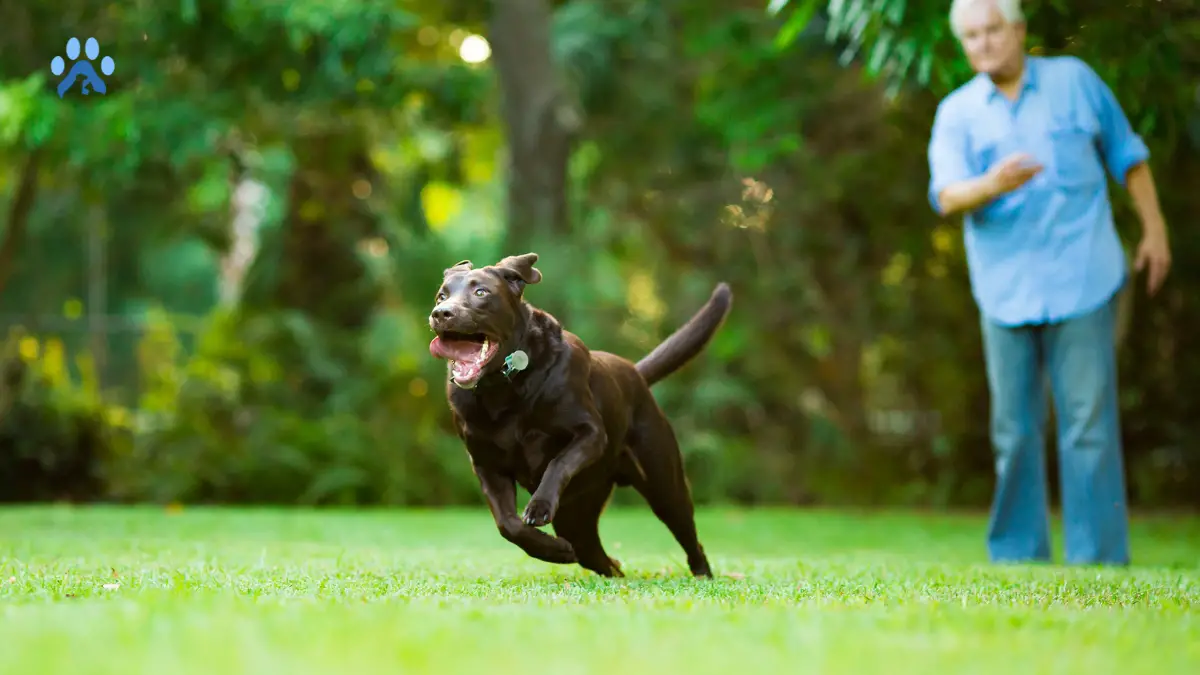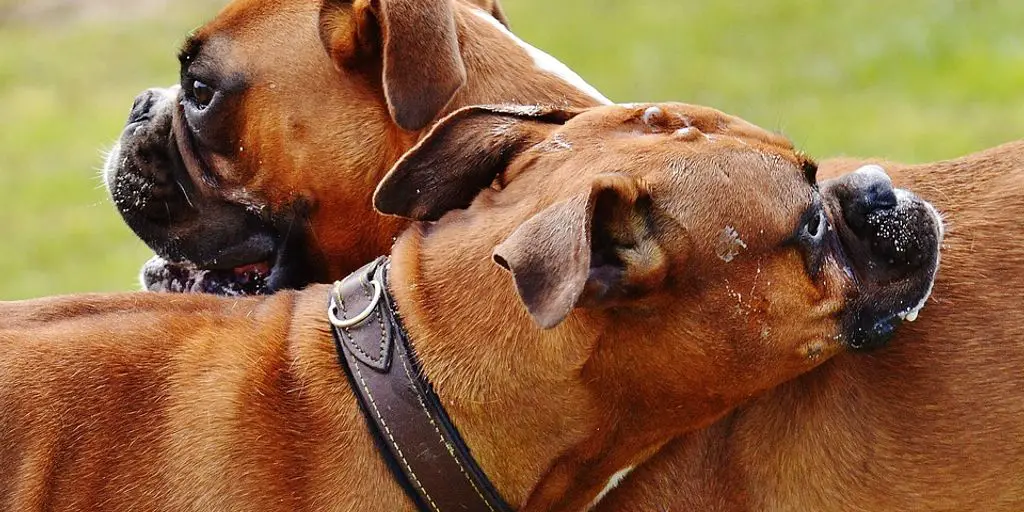Training your dog to come when called is one of the most important skills you can teach them. Not only does it ensure their safety, but it also strengthens the bond between you and your furry friend. However, teaching this skill requires patience, consistency, and positive reinforcement.
To start, choose a command word or phrase that you will consistently use when calling your dog, such as “come” or “here.” Use this command in a positive, upbeat tone of voice to encourage your dog to come to you. It’s important to pair this command with a reward, such as a treat or praise, to reinforce the behavior.
When teaching your dog to come when called, start in a quiet, distraction-free environment and gradually increase the level of distraction as your dog becomes more reliable. Practice regularly and keep training sessions short to avoid overwhelming your dog. With time and patience, your dog will learn to come when called, making walks and playtime more enjoyable for both of you.
Why Teaching Your Dog to Come When Called is Important
Teaching your dog to come when called is an essential part of dog training. It is also known as a recall, and it is one of the most important basic dog commands. Recall is the ability to call your dog back to you, regardless of what they are doing or where they are. This command can be used to keep your dog safe, prevent them from getting into trouble, and help you maintain control over them.
Here are some reasons why teaching your dog to come when called is important:
- Safety: If your dog is off-leash or out of sight, being able to call them back to you can prevent them from getting lost, hit by a car, or getting into dangerous situations.
- Control: Having a reliable recall can help you maintain control over your dog in public places, around other dogs, or when they are showing unwanted behaviors.
- Bonding: Training your dog to come when called can help strengthen the bond between you and your dog. It can also help build trust and improve your dog’s confidence.
- Exercise: Being able to call your dog back to you can allow you to give them more freedom to explore and play, while still being able to bring them back when it’s time to go home.
To teach your dog to come when called, start by using their name and a recall command, such as “come” or “here.” Use positive reinforcement techniques, such as treats, praise, and rewards, to encourage your dog to come to you. Practice in a quiet, distraction-free environment, and gradually increase the level of distraction as your dog becomes more reliable.
Remember to always reward your dog for coming to you, even if it takes them a while to get there. Avoid using punishment or negative reinforcement, as this can damage your relationship with your dog and make them less likely to come when called.
In summary, teaching your dog to come when called is an important part of dog training. It can help keep your dog safe, improve your bond with them, and give them more freedom to explore and play. Use positive reinforcement techniques and practice in a distraction-free environment to help your dog learn this essential command.
Training Your Dog to Come When Called
Teaching your dog to come when called is an essential skill for any dog owner. A reliable recall can help keep your dog safe and out of danger in a variety of situations. Here are some steps to help you train your dog to come when called.
Step 1: Start in a Quiet Room
Start by practicing in a quiet room with no distractions. Put your dog on a leash and call their name. When they come to you, reward them with a treat or praise. Repeat this several times until your dog is consistently coming when called.
Step 2: Add a Verbal Cue
Once your dog is consistently coming when called in a quiet room, add a verbal cue such as “come” or “here.” Use the cue every time you call your dog to come to you.
Step 3: Practice in a Low-Distraction Environment
Practice in a low-distraction environment such as your backyard or a quiet park. Call your dog to come to you and reward them when they do. Gradually increase the distance between you and your dog.
Step 4: Practice with Distractions
As your dog gets better at coming when called, gradually increase the level of distractions. Practice in a busier park or around other dogs. Use high-value treats to keep your dog focused on you.
Step 5: Practice at a Distance
Practice calling your dog to come from a distance. Start with a short distance and gradually increase it. Use a long leash to help keep your dog safe while practicing at a distance.
Step 6: Practice Off-Leash
Once your dog is reliably coming when called on a leash, start practicing off-leash in a safe, enclosed area such as a dog park. Use toys or a game of tug to make coming to you more interesting and rewarding.
Step 7: Proofing Your Dog’s Recall
Proofing your dog’s recall means practicing in a variety of situations and environments to ensure that your dog will come when called no matter what. Practice in different locations and with different distractions. Use a variety of rewards and practice both on and off-leash.
Remember to always use a positive tone of voice when calling your dog to come to you. Never scold your dog for not coming when called, as this can create a negative association with the recall command. In case of an emergency, you can use a special recall command such as “emergency recall” to ensure that your dog comes to you quickly and without hesitation.
If you’re having trouble training your dog to come when called, consider seeking help from a professional dog trainer or the AKC GoodDog! Helpline. With patience, practice, and positive reinforcement, you can teach your dog to come when called and enjoy the freedom and safety that comes with a reliable recall.
Tips for Effective Recall Training
Recall training is an essential skill that every dog should learn. It can help keep your furry friend safe in emergency situations and give you peace of mind when you’re out and about. Here are some tips to help you train your dog to come when called.
Start with Repetition and Positive Reinforcement
Repetition is key when it comes to recall training. Start by calling your dog’s name and rewarding them with a treat or toy when they come to you. Use a positive tone of voice and give plenty of praise and affection. Repeat this process several times a day, gradually increasing the distance between you and your dog.
Proofing and Rewards
Once your dog is responding reliably to your recall command, it’s time to start proofing. This means practicing in different environments and with various distractions. Always reward your dog for coming to you, even if they’re distracted or take longer than usual. Use high-value treats or toys to keep them motivated.
Games and Toys
Training games like hide-and-seek or hot potato can make recall training more fun and engaging for your dog. Incorporate their favorite toys or treats to keep them interested and motivated. Remember to use positive reinforcement and plenty of praise.
Distractions and Environment
It’s important to practice recall training in different environments and with various distractions. Start in a quiet, familiar space and gradually increase the level of distraction. Use a long leash or training collar to keep your dog safe and under control.
Command and Tone
Choose a recall command that is short and easy to remember, such as “come” or “here.” Use a firm, confident tone of voice when giving the command, but avoid shouting or sounding angry. Your dog should associate the recall command with something positive, like treats or playtime.
Off-Leash Training
Once your dog is responding reliably to your recall command, you can start practicing off-leash training in a safe, enclosed area like a dog park. Always supervise your dog and use positive reinforcement to keep them motivated.
Emergency Recall
In emergency situations, you may need to call your dog back to you quickly. Practice an emergency recall command, such as “come now” or “emergency,” and use a high-value treat or toy as a reward. This can help keep your dog safe in unexpected situations.
Positive Association
Always make recall training a positive experience for your dog. Use plenty of praise, affection, and rewards to reinforce good behavior. Avoid using punishment or negative reinforcement, as this can damage your relationship with your dog and make them less likely to come when called.
Recall training is an essential skill that takes time and patience to master. With plenty of repetition, positive reinforcement, and practice, you can train your dog to come when called in any situation.
Common Mistakes to Avoid
Training your dog to come when called is an essential skill that every dog owner should teach their furry friend. However, there are some common mistakes that you should avoid to ensure that your training is effective and successful.
Using a Negative Association
One of the most common mistakes that dog owners make when training their dogs to come when called is using negative associations. For example, if you call your dog to come and then scold them for something they did wrong, they will start associating the recall with negative experiences. This can make them hesitant or reluctant to come when called in the future.
Inconsistency with Verbal Cues and Eye Contact
Another mistake is being inconsistent with your verbal cue and eye contact. When training your dog to come when called, it’s important to use the same verbal cue every time, such as “come” or “here.” Additionally, you should make eye contact with your dog when giving the command. This helps to reinforce the verbal cue and ensure that your dog understands what you want them to do.
Poisoned Cue
A poisoned cue is when a verbal command becomes associated with a negative experience. For example, if you only call your dog to come when it’s time to go home from the park, they may start associating the command with the end of playtime. This can make them less likely to come when called in the future. To avoid this, make sure to call your dog to come at random times and in different situations.
Scolding
Scolding your dog when they don’t come when called can also be a mistake. This can make them fearful or anxious, which can make them less likely to come when called in the future. Instead of scolding, try using positive reinforcement, such as treats or praise, to encourage your dog to come when called.
In summary, when training your dog to come when called, it’s important to avoid common mistakes such as using negative associations, being inconsistent with your verbal cue and eye contact, creating a poisoned cue, and scolding. By avoiding these mistakes and using positive reinforcement, you can train your dog to come when called effectively and successfully.
What to Do If Your Dog Doesn’t Come When Called
Even with the best training, sometimes dogs don’t come when called. It’s important to have a plan in place for these situations to ensure your dog’s safety and prevent any potential harm.
Try Different Recall Techniques
If your dog isn’t responding to your usual recall cue, try mixing it up. Use a different tone of voice or a new command word. You can also try a whistle or a clicker to get your dog’s attention. The AKC GoodDog! Helpline recommends practicing recall in different locations and situations to help your dog generalize the behavior.
Use Positive Association
Make sure your dog associates coming when called with positive experiences. Use training treats or a favorite toy as a reward for a successful recall. Avoid using punishment or negative reinforcement as this can damage your dog’s trust and make them less likely to come when called in the future.
Train an Emergency Recall
An emergency recall is a special type of recall that is used in urgent situations, such as when your dog is in danger or about to run into a busy street. Training an emergency recall involves using a unique command word and practicing it in high-distraction environments. The off-leash freedom website recommends using a whistle or a unique sound as the emergency recall signal.
Consider Professional Training
If your dog consistently ignores your recall command, it may be time to seek professional help. A certified dog trainer can help identify any underlying issues and provide personalized training to improve your dog’s recall.
In summary, if your dog doesn’t come when called, try different recall techniques, use positive association, train an emergency recall, and consider professional training if needed. Remember, a reliable recall is essential for your dog’s safety and well-being.
Frequently Asked Questions
How to train a dog to come when called?
Training your dog to come when called is an important skill that can be taught through positive reinforcement. Start by using a recall cue, such as “come” or “here,” and rewarding your dog with treats or praise when they come to you. Gradually increase the distance and distractions to reinforce the behavior. Consistency and patience are key when training your dog to come when called.
What are some tips to teach a dog to come when called?
Here are some tips to help teach your dog to come when called:
- Use a recall cue consistently
- Reward your dog with treats or praise when they come to you
- Start training in a low-distraction environment and gradually increase the distractions
- Use a long leash to give your dog more freedom while still being able to reinforce the behavior
- Avoid punishing your dog if they don’t come when called, as this can create negative associations with the behavior
How to get a dog to come inside?
Teaching your dog to come inside is similar to teaching them to come when called. Start by using a recall cue and rewarding your dog when they come to you. Gradually increase the distance and distractions, and use a treat or toy to entice your dog to come inside. Be patient and consistent, and avoid punishing your dog if they don’t come inside right away.
How to discipline a dog that doesn’t come when called?
Disciplining your dog for not coming when called is not recommended, as it can create negative associations with the behavior and damage the trust between you and your dog. Instead, focus on positive reinforcement and consistency when training your dog to come when called. If your dog doesn’t come when called, try using a different recall cue or increasing the rewards for coming to you.
How long does it take to train a dog to come when called?
The amount of time it takes to train a dog to come when called can vary depending on the dog’s breed, age, and temperament, as well as the consistency and patience of the owner. Some dogs may learn the behavior in a few weeks, while others may take several months. It’s important to be patient and consistent when training your dog and to avoid punishing them if they don’t come when called.
What to do when a dog ignores a command?
If your dog ignores a recall command, try the following:
- Use a different recall cue
- Increase the rewards for coming to you
- Avoid using punishment or negative reinforcement
- Train in a low-distraction environment and gradually increase the distractions
- Use a long leash to reinforce the behavior while giving your dog more freedom
Remember that training your dog to come when called takes time and patience. Stay consistent and positive, and your dog will learn the behavior with time and practice.



